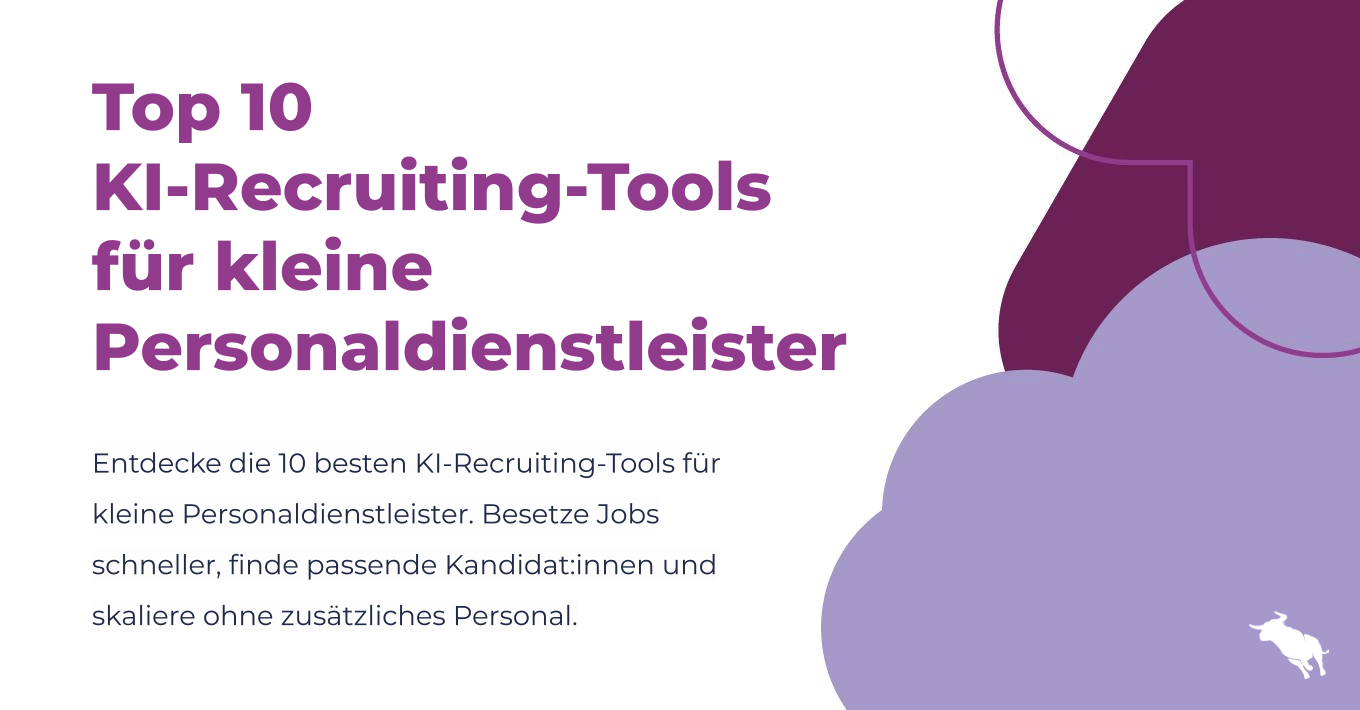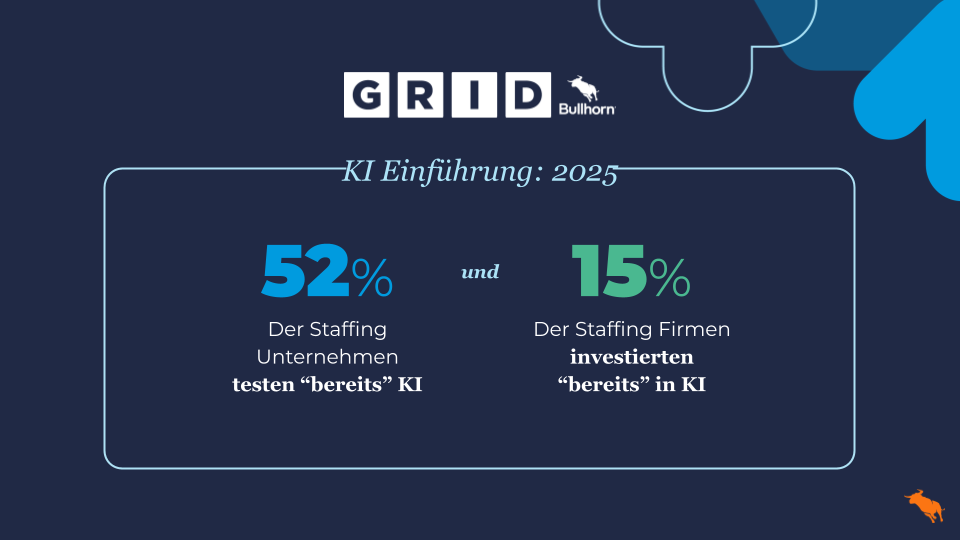Ist Active Sourcing überholt?

Active sourcing is a hot topic in recruiting. With this strategy in recruiting, an organization tries to actively contact potential applicants and build a long-term relationship with talented candidates. This approach is in contrast to the traditional, reactive ‚Post & Pray‘ and is spreading more and more. But will this trend soon be overtaken by the latest developments in intelligent technologies? In this blog I would like to share my opinion with you.
The trend of the year
Anyone who regularly looks around on recruiting blogs and trend lists knows that active sourcing is a hotly discussed keyword that returns every year. The Institute for Competitive Recruiting’s 2017 Recruiting Trends Study found that active sourcing was one of the top recruiting topics for almost 80% of companies in 2016. The topic special ‚Active Sourcing and Social Recruiting‘ of the Otto Friedrich University Bamberg reports that over 50% of the candidates prefer to be addressed by companies than to apply themselves. In short, active sourcing is a must for modern recruiting.
Call and forward
I can still remember well that at the beginning of my career with a North German executive search company as headhunter I got a ‚target list‘ from the customer with names of target companies or sometimes target persons who should be contacted. Then it was simply a matter of calling reception and being put through to the desired contact person. Of course, people on XING and LinkedIn also looked into potential candidates, but the main way to contact them was through “Cold Calling”.
Modern recruiting
During my time at XING, I was able to take a look behind the scenes of countless HR and recruiting departments and noticed that many companies, mainly medium-sized companies, wanted to modernize absolutely, but were not yet prepared for modern recruiting. I then saw this process of restructuring corporate recruiting several times and noticed that many companies recruited faster and more cost-effectively than before. This was mainly because you no longer had to hire a headhunter for every job vacancy.
During this time, the shortage of skilled workers was somewhat less relevant than now and there was a good range of qualified and promising candidates. With good employer branding, the targeted placement of job advertisements on certain job exchanges and the effective use of recruiting software in general, there was a lot to gain in many organizations.
Be found instead of searching
Principles that have long been standard in marketing are now becoming increasingly popular in recruiting. Commercial messages are becoming less and less valued and the focus is shifting much more to content, employer branding and storytelling. The provision of relevant, personalized information at the right time and the sharing of authentic, personal stories are becoming increasingly important. On the basis of these first starting points, a meaningful relationship with target groups (ie potential applicants) can then be established and maintained. You can find out more about this in our white paper Content Marketing for Recruiting .
Intelligent technology
Mithilfe von intelligenten Technologien kann das gerade beschriebene Prinzip noch weiter ausgebaut werden. Zunächst sollten Sie sogenannte ‘Candidate Personas’ entwickeln, die Ihren idealen Kandidaten für eine bestimmte Stelle oder Abteilung repräsentieren. Versuchen Sie so viele Informationen wie möglich über diese Person herauszufinden. Was motiviert Ihren idealen Kandidaten? Womit beschäftigt er sich in seiner Freizeit? Welchen Hintergrund hat er oder sie? Mit dieser Persona im Hinterkopf schreiben Sie dann Content.

Der von Ihnen speziell für Ihre Zielgruppe entwickelte Content zieht relevante Besucher auf Ihre Webseite, wo sie im Tausch gegen z.B. ein interessantes Whitepaper, die Ergebnisse eines Persönlichkeitstests oder einen Gehaltscheck, einige Daten hinterlassen. Mit diesen Daten wird dann ein Profil des interessierten Kandidaten erstellt und mithilfe von Cookies wird dessen Verhalten auf der Webseite gespeichert. Auf Basis dieser Information, können dem potenziellen Kandidaten in Zukunft noch relevantere Inhalte geboten werden, wie beispielsweise ein Stellenangebot, das nahtlos auf dessen Profil anschließt.
Warme ‘Recruiting Qualified Leads’
Recruitment Marketing Automation geht noch einen Schritt weiter. Bei jeder Aktion, die auf der Webseite ausgeführt wird, wird dem Kandidaten (im Hintergrund) eine bestimmte Punktzahl zugeschrieben. Das Öffnen einer E-Mail könnte zum Beispiel mit 3 Punkten bewertet werden, während das Lesen eines Blogs 5 Punkte bedeutet. Hat dann der Kandidat irgendwann eine bestimmte Punktzahl erreicht, dann wird er zum sogenannten ‘Recruitment Qualified Lead’. Auf Basis der gesammelten Informationen, wissen wir nun, dass der Kandidat deutliches Interesse an unserer Organisation oder vielleicht sogar an einer konkreten offenen Stelle hat. Anstatt eines kalten Anrufs oder einer XING-Nachricht, kann dieser potenzielle Kandidat nun auf Basis einer lauwarmen Beziehung angesprochen werden. Das nennt man auch Inbound Recruiting.

Fazit
Bedeutet das jetzt, dass Active Sourcing von ‘Recruitment Marketing Automation’ überholt wird? Wenn wir sehr weit in die Zukunft schauen, denke ich, dass der Stellenwert des Active Sourcings immer mehr abnehmen wird und intelligente Technologien, darunter auch künstliche Intelligenz, den Recruiting Prozess immer mehr prägen werden. Im Moment werden lediglich erste Schritte in diese Richtung gemacht und erste Erfahrungen mit ‘Inbound Recruiting’ gesammelt. Auch im Marketing sieht man, dass z.B. die aktive Ansprache von Leads auf Messen und Events die Pipeline auf einen Schlag gut füllen kann, während der Aufbau einer vergleichbaren Anzahl an ‘Sales Qualified Leads’ über Marketing Automation noch viel mehr Zeit kostet. Deswegen ist eine Kombination beider Herangehensweisen (Inbound und Outbound) hier, meiner Meinung nach, vorläufig die beste Strategie, während sich ‘Recruitment Marketing Automation’ weiterentwickelt und sicherlich immer mehr zu einem weiteren wertvollen Instrument im Recruiting wird.
Would you like to know more about this or do you disagree? Then we would be happy to hear from you .
This blog was written by our former Country Manager DACH, Roel Smulders .











